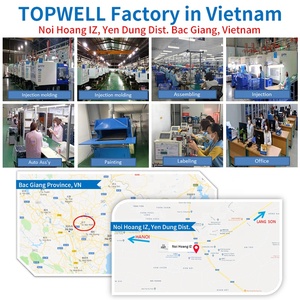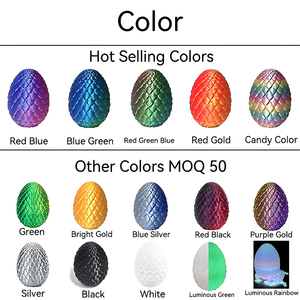(44461 products available)
























































 Ready to Ship
Ready to Ship





 Ready to Ship
Ready to Ship











 Ready to Ship
Ready to Ship
















 Ready to Ship
Ready to Ship






















































































































3D-printed toys come in many types and categories. Here are some common types of 3D-printed toys:
Action Figures and Collectibles
These toys are based on characters from movies, TV shows, video games, or comic books. They include action figures, super heroes, villains, and more. They can be customized by changing their appearance or adding accessories.
Building Blocks and Construction Sets
3D-printed building blocks and construction sets are compatible with other known brands like LEGO. They include individual pieces that can be fused to make structures, vehicles, and other creations. Examples of toys in this category are 3D-printed LEGO-compatible bricks and other building sets.
Puzzles and Brain Teasers
These toys challenge the mind and come in different forms, such as jigsaw puzzles, mechanical puzzles, and 3D-printable puzzle games.
Dolls and Dollhouse Accessories
3D-printed dolls come in different styles, such as fashion dolls, baby dolls, and customizable characters. Similarly, 3D-printed dollhouse accessories include miniature furniture, appliances, and other items that complement the dolls.
Educational Toys
These toys are developed to encourage learning and exploration. They include STEM-based kits, anatomical models, and geographical maps.
Outdoor and Sports Toys
These toys are meant for outdoor play and activities. They include items such as 3D-printed frisbees, boomerangs, and other sport-related equipment.
Customizable Toys
These toys can be modified to suit personal preferences. They include 3D-printed action figures with customizable features and toys with interchangeable parts.
Gadgets and Geeks Toys
These are unique and innovative toys that combine playfulness with functionality. They include 3D-printed fidget spinners, keychains, and other small gadgets.
When purchasing a 3D print toy for resale, buyers should consider the material, printability, market demand, and age group.
Business owners should consider the material used to make the 3D toy. Most toys are printed with PLA, PETG, or ABS filaments. PLA is biodegradable and easy to print with low toxicity. Toys manufactured with PLA are ideal for children. ABS is tough and flexible. Toys printed with ABS can withstand rigorous play. PETG toys are impact resistant and have high chemical resistance. They are ideal for outdoor use. PETG toys can withstand extreme temperatures.
Buyers should get toys that are easy to print. Some toys have complex designs that require advanced printing skills. Such toys may discourage new customers. The toy models should also be printed in segments. This allows customers to assemble the parts easily. Additionally, buyers should get toys that are compatible with common 3D printers. Some toys may require high-end printers with advanced features like dual extrusion, higher build volume, and flexible printing options.
Buyers should consider the market demand for 3D printed toys. They should research current market trends to identify what toys are popular among kids. This will help the business stand out and attract more customers. Also, the toys should target a specific age group. Some toys are suitable for younger children, while others are for teens or adults. For instance, toys with small parts are not ideal for children under three years.
3D-printed toys have functions, qualities, and structures that vary according to their styles and applications. Here are the essential elements:
Customization
Most 3D-printed toys are able to be customized to fit a person's preferences. This includes changes in size, shape, color, and even complexity of the design. The kids can make their unique toys, thus enhancing a sense of ownership and creativity.
Interactivity
Toys that are interactive can be customized for more fun. These toys can include moving parts, puzzles, and games. They are a challenge for the children and at the same time keep them engaged.
Education
Educational toys 3D-printed assist in learning by making the process more enjoyable. The toys can include anatomical models, math manipulatives, and science kits. They offer a hands-on approach that helps the children understand difficult concepts easily.
Durability
Toys that are 3D-printed from high-quality materials like ABS or PETG are more long-lasting and can endure prolonged use as well as rough handling. This makes them ideal for children who play rough. They won't easily break or wear out, giving them a longer lifespan.
Safety
3D-printed toys are made with safety features in mind. This ensures all edges are smooth, small parts are well-placed, and no toxic materials are used. Parents can have peace of mind knowing the toys their kids play with are safe. They comply with safety standards.
Entertainment
Entertainment toys are the main reason for playing. These can be categorized into action figures, building blocks, and stuffed animals. The 3D printing process makes the creation of these toys personalized to the child's interests.
Cost-effectiveness
3D printing can be much cheaper than buying commercially produced toys, particularly when making customized or unique designs. This makes it an economical choice for parents as well as hobbyists who make toys for their children or as a side job.
The safety of 3D-printed toys is paramount, especially if they are intended for children. Here are some key safety considerations:
Material Safety
The materials used in 3D printing should be non-toxic, BPA-free, and free from harmful chemicals. Filaments like PETG and ASA are generally considered safer. Additionally, food-grade materials such as HDPE and PLA should be used when printing items that may come into contact with food.
Mechanical Safety
3D-printed toys should not have sharp edges or small parts that could pose a choking hazard. Toys should be mechanically sound and not have parts that can easily break off or become loose. This includes ensuring that moving parts are well-designed and that the toy is structurally sound.
Electrical Safety
If the toy is battery-operated or includes electrical components, it is important to ensure that these are safely integrated. This includes proper insulation, secure battery compartments, and compliance with electrical safety standards.
Thermal Safety
3D-printed toys should not be made with materials that can easily melt or deform at high temperatures. Toys should be tested to ensure they can withstand typical use conditions without degrading.
The quality of 3D-printed toys can vary greatly depending on several factors. Here are some key considerations to ensure high-quality toys:
Material Quality
Choosing the right filament is crucial. Materials like PLA, PETG, and ABS are popular for their strength and durability. Each material has its pros and cons, so consider the toy's intended use.
Design and Functionality
Ensure the design is functional and aesthetically pleasing. This includes considering the toy's usability, durability, and how well it meets its intended purpose. Incorporating features like interlocking parts, snap fits, or hinges can enhance functionality.
Printer Calibration
Properly calibrating the 3D printer is essential for achieving consistent quality. Factors such as nozzle temperature, bed temperature, print speed, and layer height can affect the final product. Fine-tuning these settings can help optimize print quality.
Post-Processing
Post-processing techniques like sanding, painting, or applying a protective coating can improve the toy's quality and appearance. Cleaning up any imperfections or rough edges can enhance the toy's feel and aesthetics.
Q1: What materials are commonly used in 3D-printed toys?
A1: The most commonly used materials in 3D-printed toys are PLA, ABS, PETG, and TPU. PLA is famous for its eco-friendliness. On the other hand, ABS is appreciated for its durability. Likewise, PETG is known for its strength and chemical resistance. Furthermore, TPU is renowned for its flexibility.
Q2: Are 3D-printed toys safe for children?
A2: 3D-printed toys can be safe for children if constructed using non-toxic materials and following safety guidelines. It is crucial to utilize child-friendly, high-quality 3D printing materials such as food-safe PLA. Moreover, toys should be meticulously designed, printed, and finished to eliminate sharp edges or tiny parts that could be hazardous.
Q3: How can I customize a 3D-printed toy?
A3: Customizing a 3D-printed toy involves modifying its design using 3D modeling software and personalizing it with colors and patterns. Users can alter aspects like size, shape, and functionality to suit their preferences by creating or editing existing designs with programs like Blender or Tinkercad.
Q4: What is the average lifespan of a 3D-printed toy?
A4: The longevity of a 3D-printed toy depends on various factors, such as the material used, the quality of the print, and how well the toy is maintained. In general, toys manufactured with high-quality materials and prints can last for several years, even with regular use.